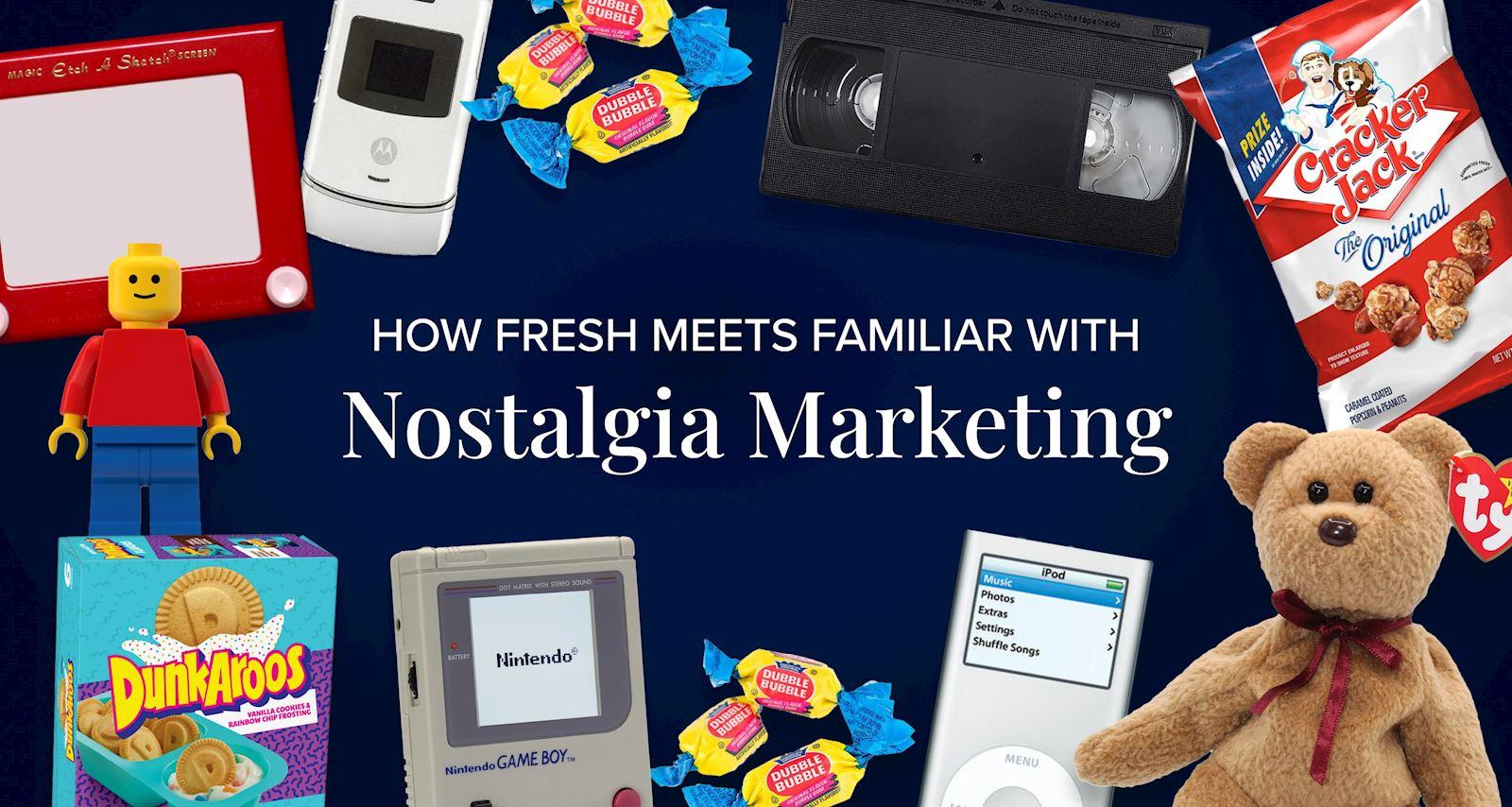Nostalgia Marketing: How the Past Became the Present’s Most Effective Marketing Tool
Published by Spinutech on April 29, 2025

Forget the future. The past is popular again.
Nostalgia marketing is gaining steam as a strategy that effectively taps into the emotional connections people have with their past. By invoking memories of earlier times — whether through retro visuals, classic jingles, or the revival of discontinued (but beloved) products — brands can build powerful emotional connections with their audience.
But make no mistake, nostalgia marketing is about more than simply rehashing old trends. To succeed, you must blend iconic elements with contemporary design and storytelling, resulting in campaigns that feel both fresh and comfortingly familiar.
Why Nostalgia Marketing is More Effective Than Ever
There are a number of factors that have contributed to the rising popularity of nostalgia marketing, making it an effective tool for brands in today's marketplace:
- Emotional Comfort Amid Uncertainty: As economic instability, technological advancements, and societal stress create uncertainty, nostalgia offers a safe space that reminds people of simpler times.
- Digital Saturation: With the growing number of digital marketing messages bombarding consumers, the emotional pull of nostalgic content helps cut through the noise and grab the audience's attention.
- Cross-Generational Appeal: Millennials and Gen X can reflect on their own experiences, while Gen Z discovers past trends via social media and pop culture revivals, making it an effective cross-generational strategy.
- Shareability and Virality: Nostalgic content taps into a sense of community as people share personal memories, sparking conversations and boosting engagement, especially on platforms like TikTok and Instagram.
- Rise of ‘Rewind Culture’: The popularity of reboots, remakes, and retro products in entertainment and fashion has primed audiences for a renewed interest in nostalgia.
How Brands Are Winning with Nostalgia Marketing
Nostalgia marketing thrives on social media, where the emotional connection to the past can be harnessed to create powerful engagement.
Here are three notable examples of brands using nostalgia to drive user participation and enhance their presence:
Pepsi’s Crystal Pepsi Revival and #ShowYour90s Campaign
Pepsi brought back its iconic 1990s product, Crystal Pepsi, as a limited-edition offering, and leveraged nostalgia to spark a massive social media campaign. By encouraging users to share their favorite 90s memories with the hashtag #ShowYour90s, Pepsi invited both older fans and younger generations to engage with the brand. This mix of retro product revival, influencer engagement, and interactive content generated buzz and increased social media visibility, making it a prime example of nostalgia-driven marketing.
Geico’s Recycled Classic Ad Campaigns
Geico took a simple yet effective approach by repurposing its most popular past ads for social media platforms like Instagram. Re-sharing these beloved commercials with updated captions reignited fond memories among fans who had enjoyed them in previous years. This strategy capitalized on the emotional resonance of past campaigns while saving creative resources, proving that nostalgia can be a cost-effective way to revive content and enhance brand recall.
Coca-Cola’s “Share a Coke” Throwback Editions
Coca-Cola's "Share a Coke" campaign featured limited-edition bottles adorned with classic logos and vintage bottle designs, creating a nostalgic experience for long-time fans. Promoting these throwback editions on social media, Coca-Cola encouraged consumers to share photos of their personalized or retro bottles. The use of vintage visuals, coupled with personal storytelling through interactive hashtags, sparked conversations and fostered connections with audiences by evoking positive memories tied to the brand.
How to Experiment with Nostalgia Marketing for Your Brand
If you're interested in testing nostalgia marketing for your brand, you can start small and authentically engage your audience before launching large-scale campaigns.
Here are five ways to dip your toes into nostalgia marketing:
1. Start Small
Begin by sharing nostalgic content such as throwback images, classic jingles, or posts that reference your brand's history. Encourage your followers to share their own memories or experiences with your products to generate organic engagement.
2. Leverage Brand Archives
Dig into your brand’s archives and reintroduce past logos, packaging, or limited-edition products with a modern twist. Showcasing your brand’s heritage can create an emotional connection without appearing forced or outdated.
3. Blend Old with New
Incorporate retro design elements into new products, packaging, or digital experiences. This combination creates a sense of familiarity while ensuring relevance to modern consumers.
4. Solicit Audience Participation
Run contests or campaigns encouraging users to share their nostalgic stories, photos, or memories related to your brand. Using branded hashtags will help build a sense of community and enhance engagement.
5. Monitor and Listen
Use social listening tools to stay informed about which cultural moments or trends resonate most with your audience. This ensures that your nostalgia-driven content remains timely, relevant, and authentic.
Nostalgia Marketing is a Powerful Tool for Creating Connections
By blending iconic elements from the past with modern strategies, brands can foster engagement, enhance brand loyalty, and drive meaningful sales. With the right balance, nostalgia marketing can offer a unique opportunity to stand out in a crowded digital landscape while building stronger relationships with your customers.
If you’re interested in exploring nostalgia marketing for your brand, let’s chat.